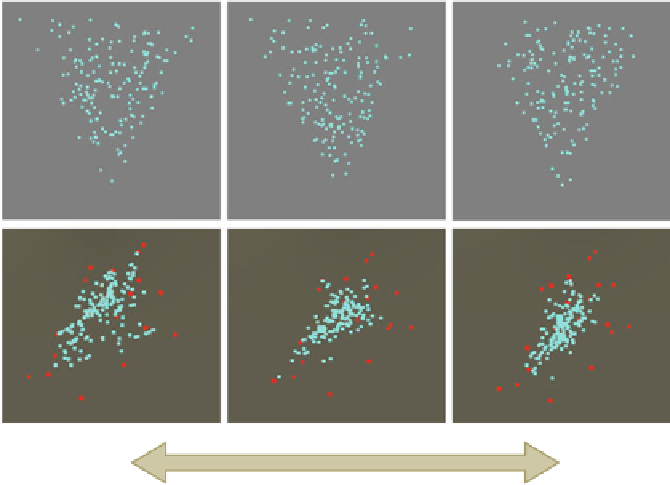Information Technology Reference
In-Depth Information
Product Replacement Policy
Most Popular
Weighted Random
Identical Replacement
significant
clustering
no
clustering
Fig. 11.7 Results from three runs with different treatments but otherwise identical initial condi-
tions. Clustering of Consumer values is only sustainable if Producers are responsive to their initial
preferences. Key: Blue Dots are individual consumer ideal vectors (bottom) or utility weights
(top). Red dots are Products in the active set
endogenously and are sustained. To test for clustering, we implemented three
simple production rules (really, product replacement):
1. Identical Replacement—the same Product replaces a Product that is consumed.
Thus the mix of Products never changes.
2. Weighted Random Replacement—replacement products are chosen by random
draw with the probability being proportional to past consumption in that broad
region.
3. Most Popular—the replacement product is chosen to be what ever the most
popular product (most consumed) in that region.
The images in Fig.
11.7
show the results of these three alternative treatments for
a given random realization, for Steps
¼
6,000. The three treatments differ in how
responsive the Producer is to Consumer demand patterns. 'Most Popular' is the
most responsive policy, followed by 'Weighted Random', which is somewhat
responsive, and followed by a non-responsive policy of 'Identical Replacement'.
The most significant result is the degree of clustering in Value Space (bottom row)
for the responsive policies. These clusters persist over extended time periods (
100


Search WWH ::

Custom Search